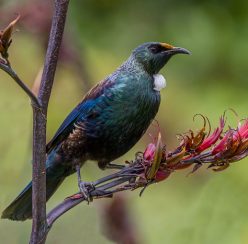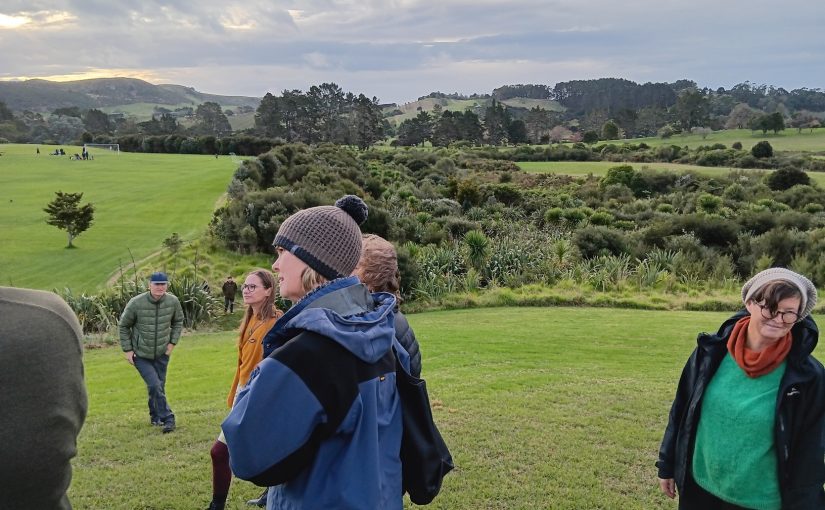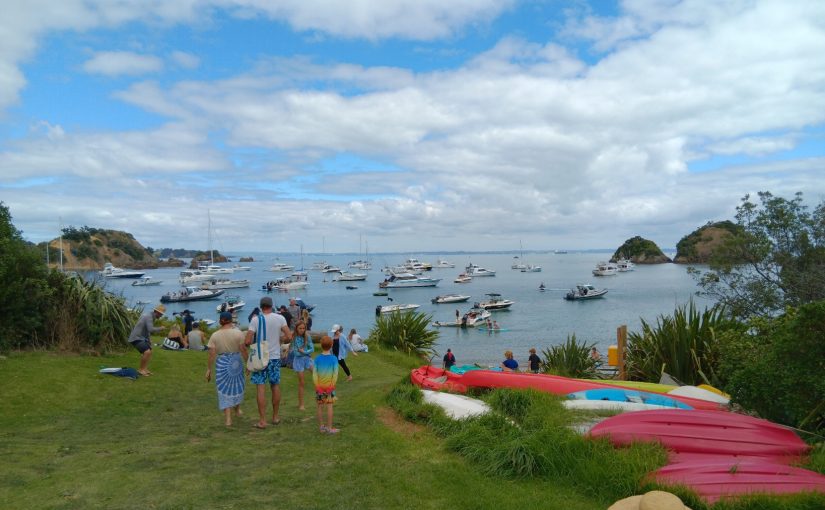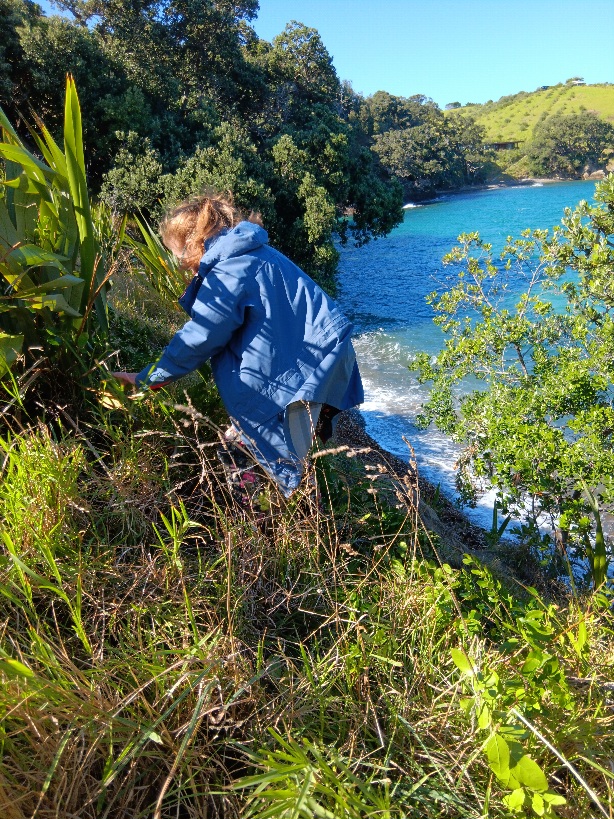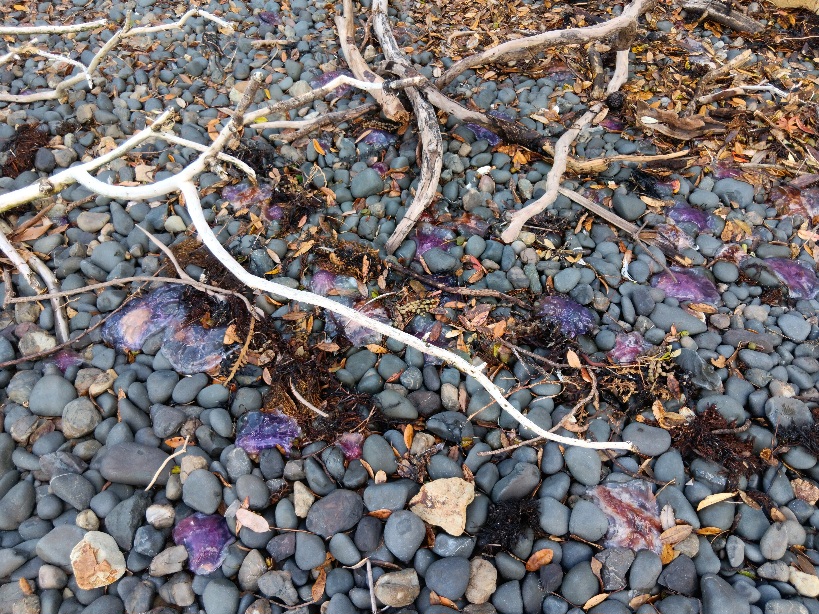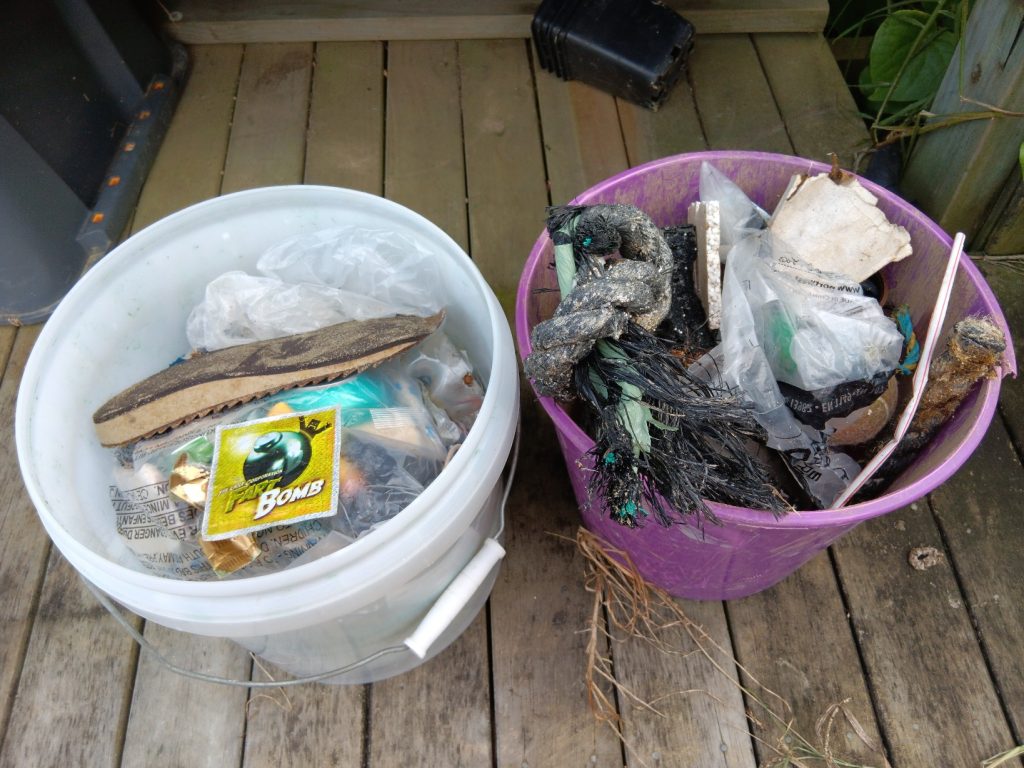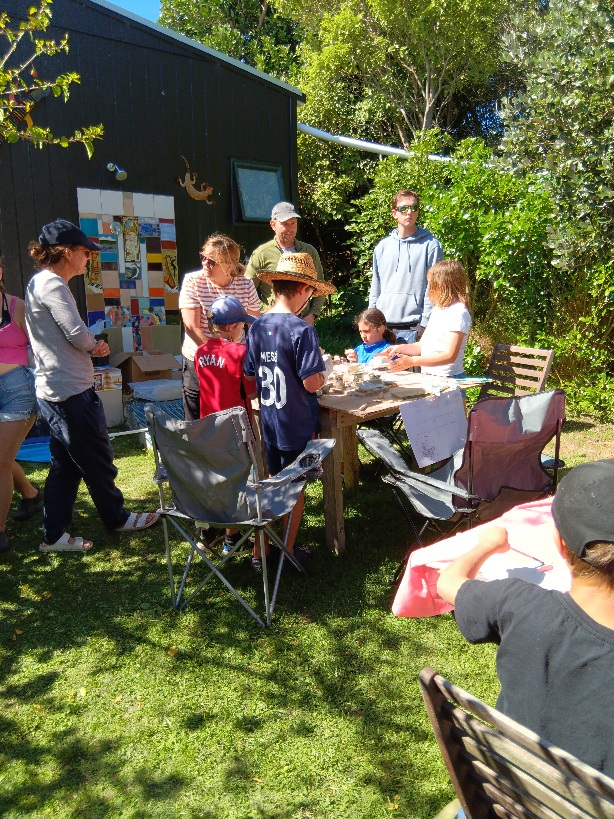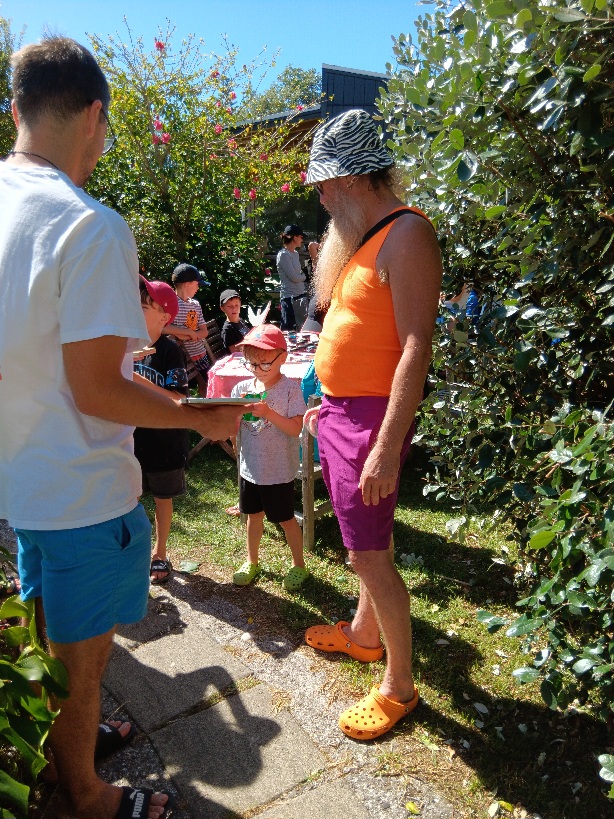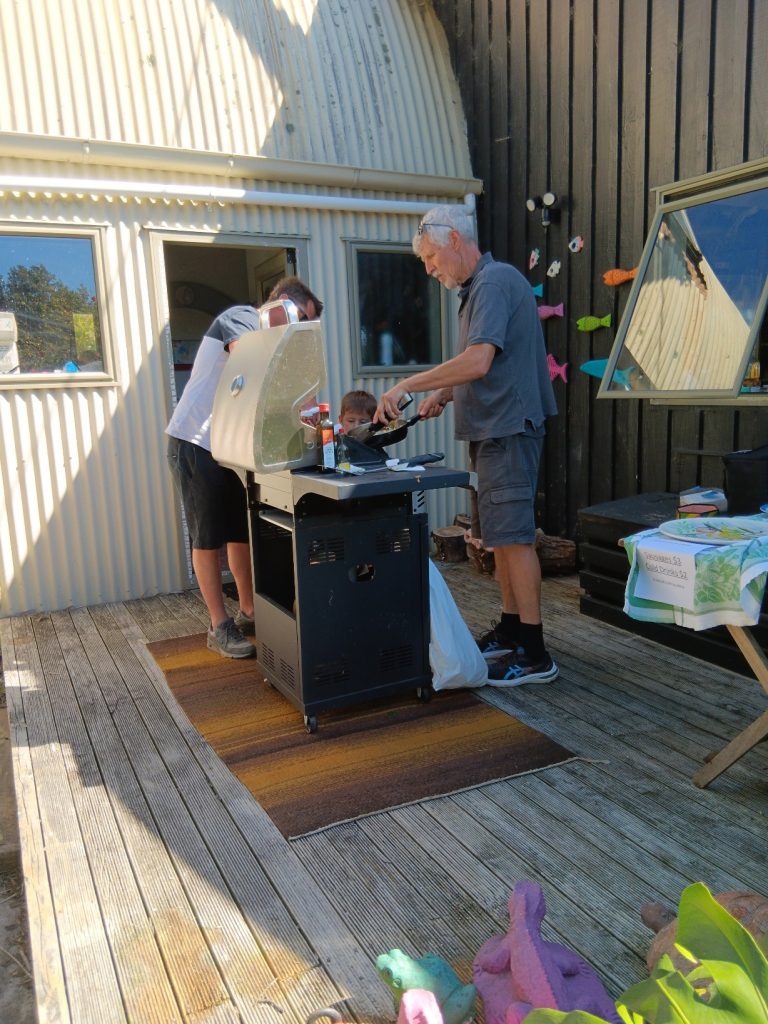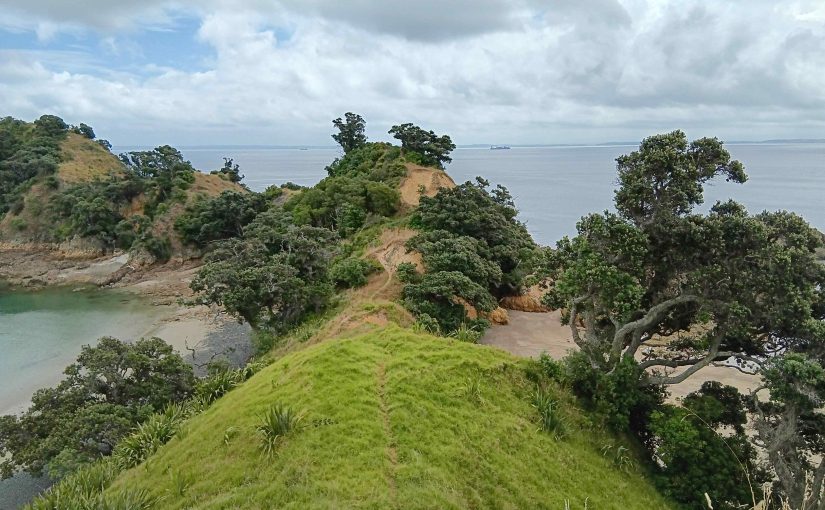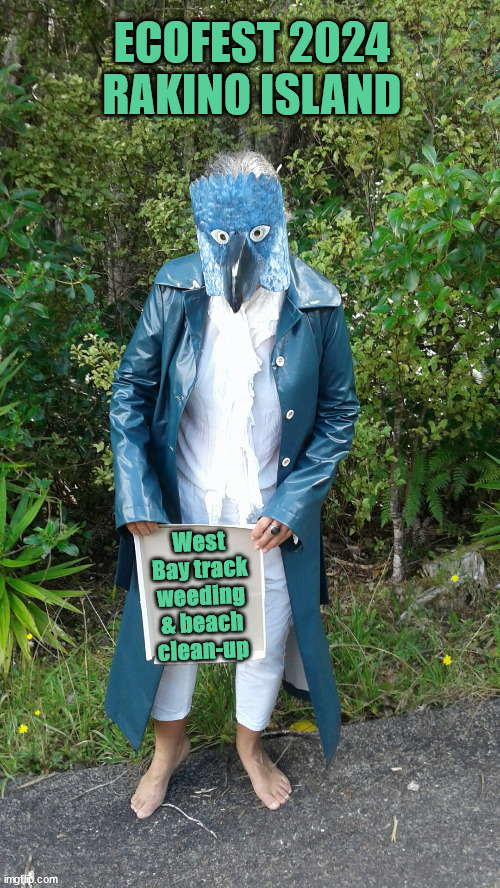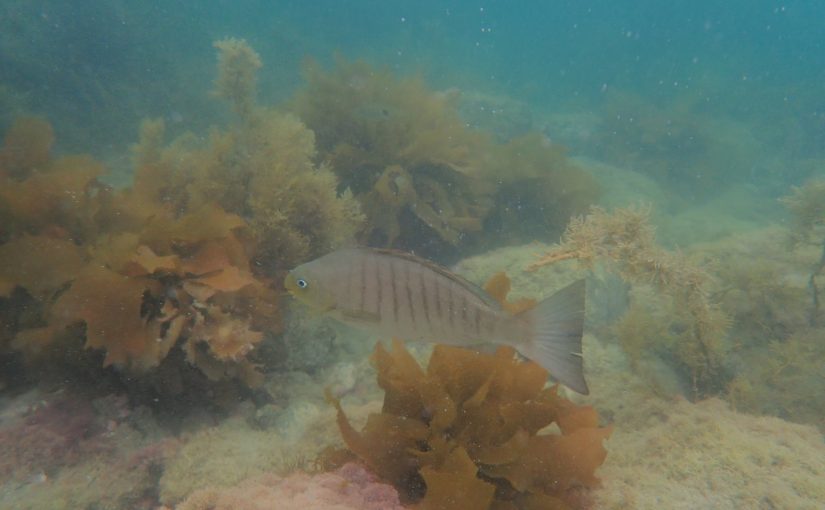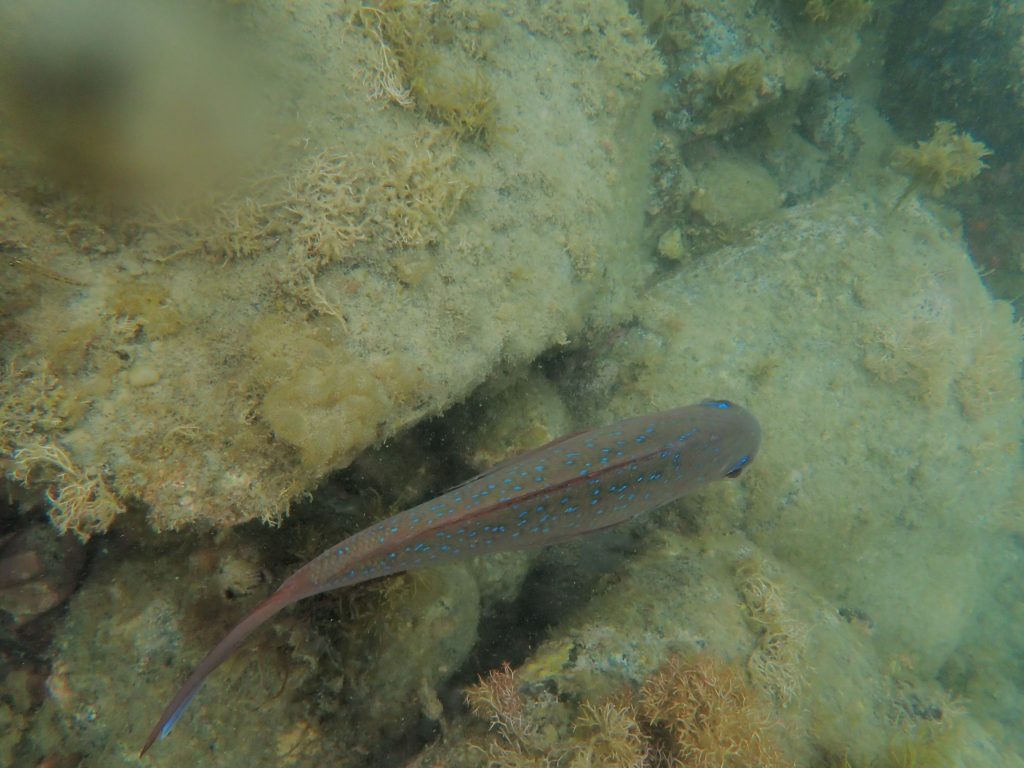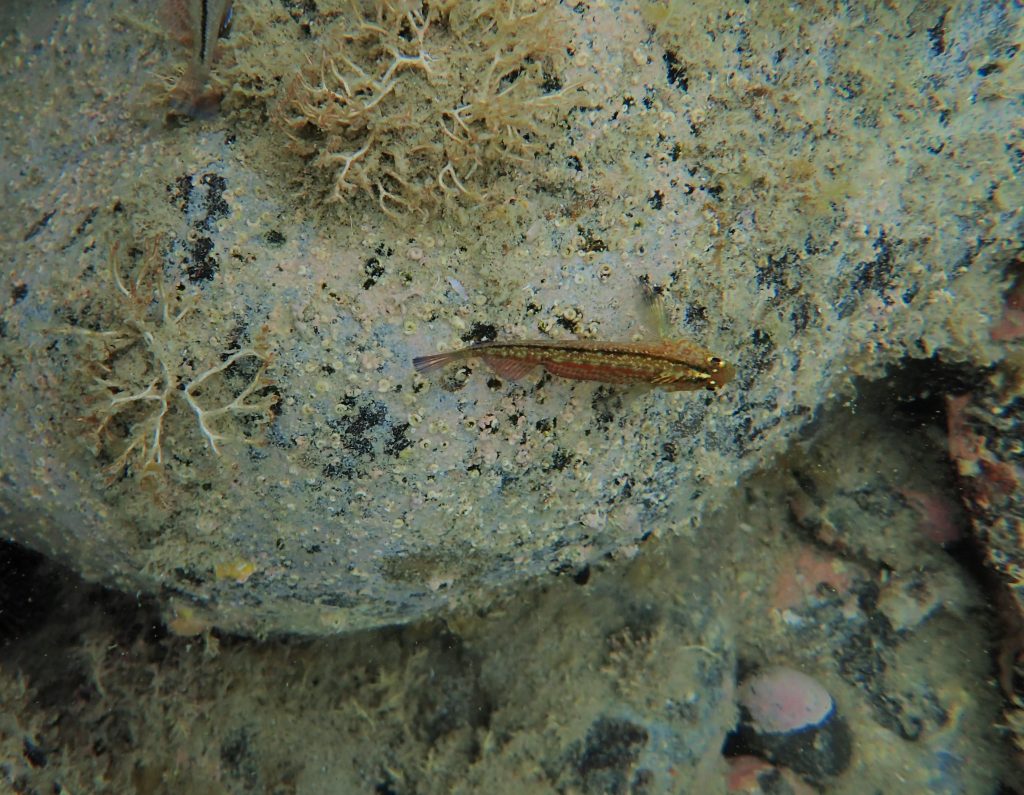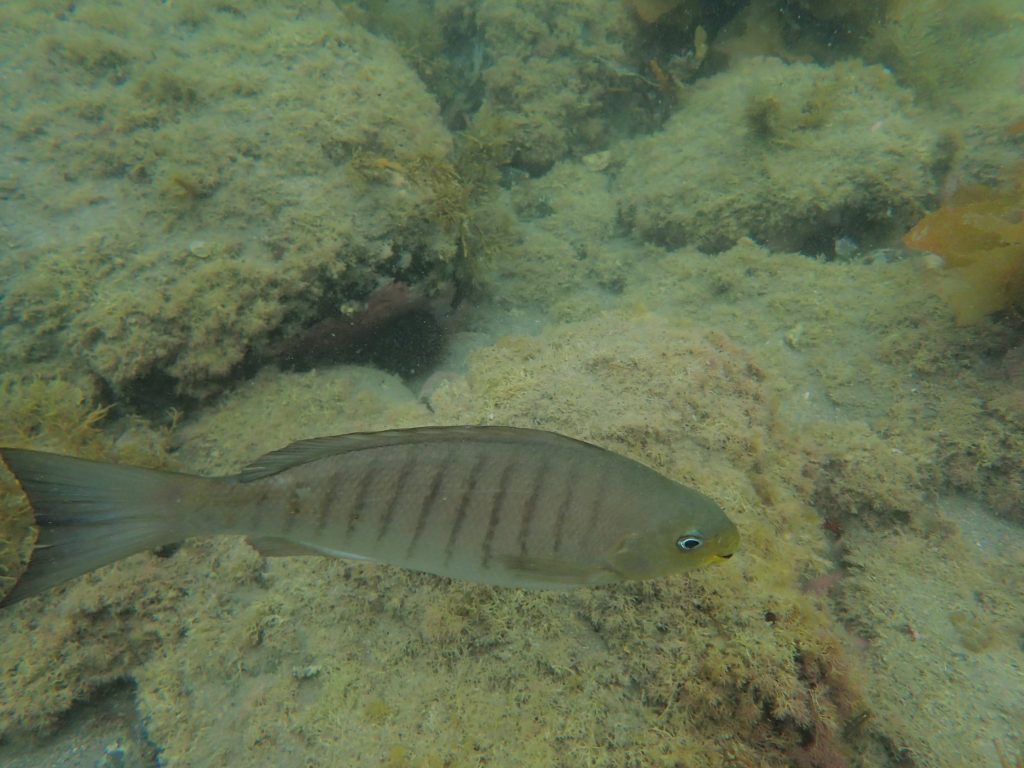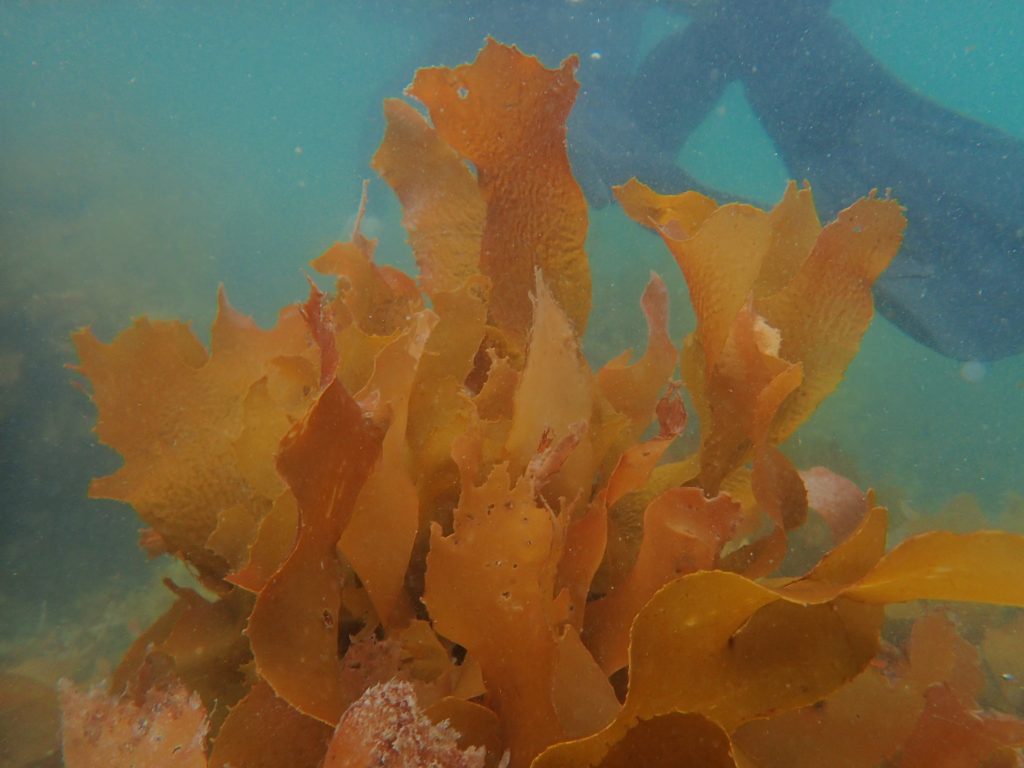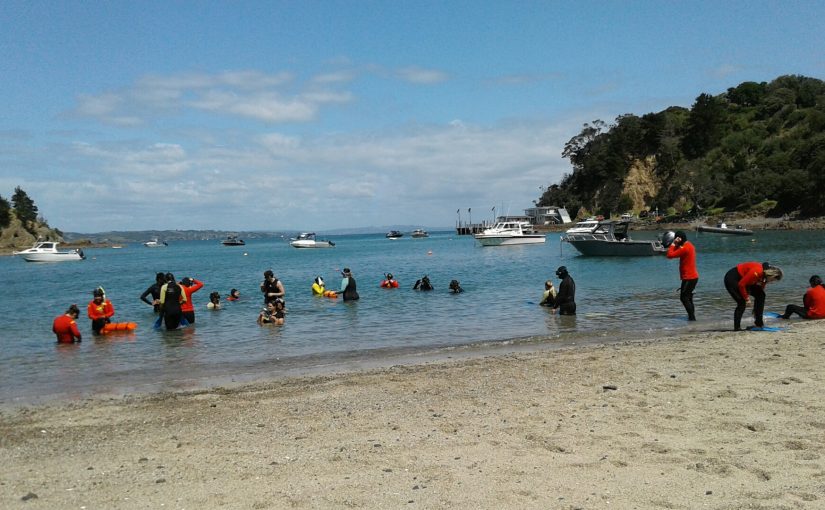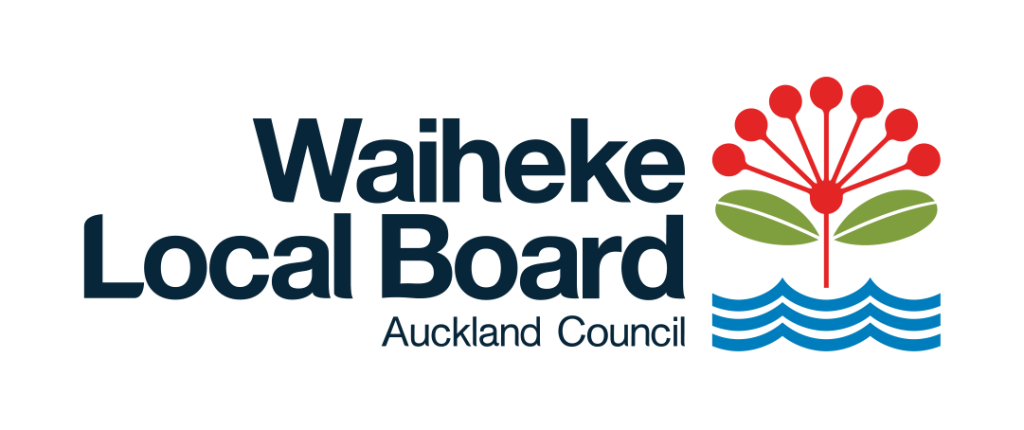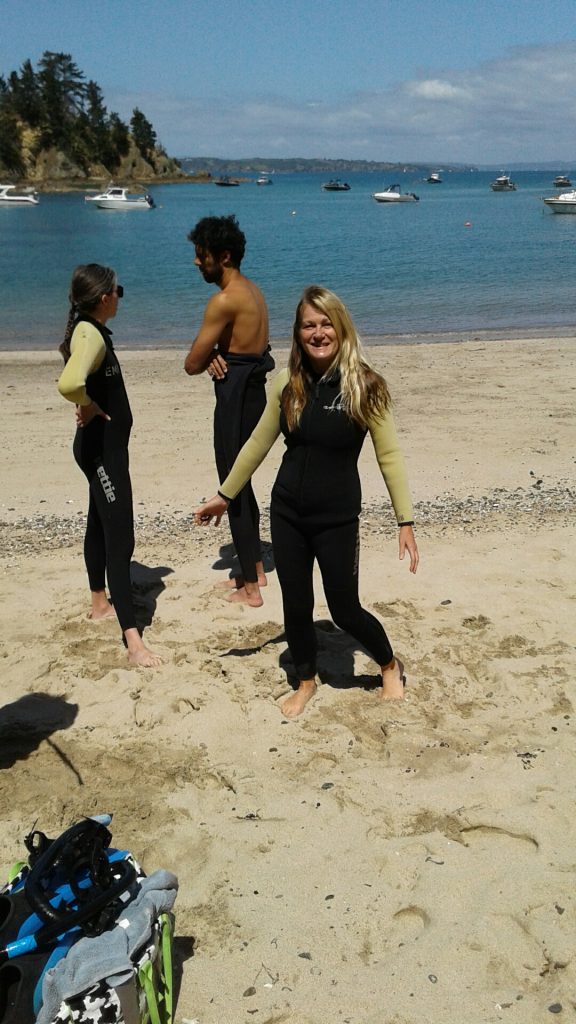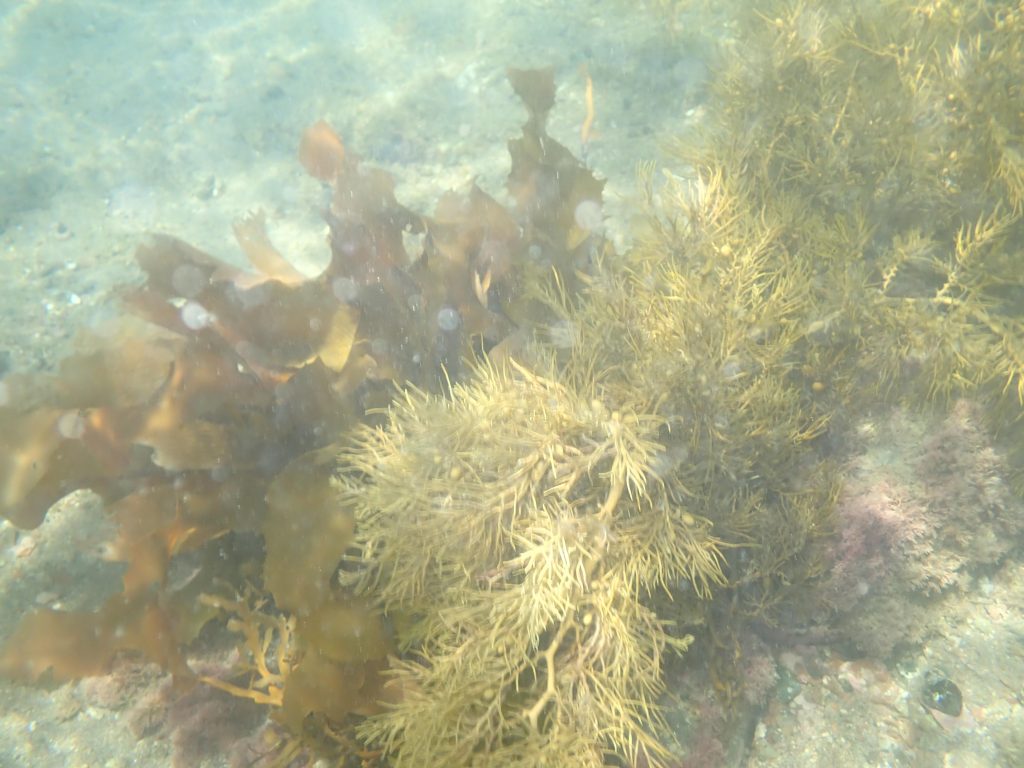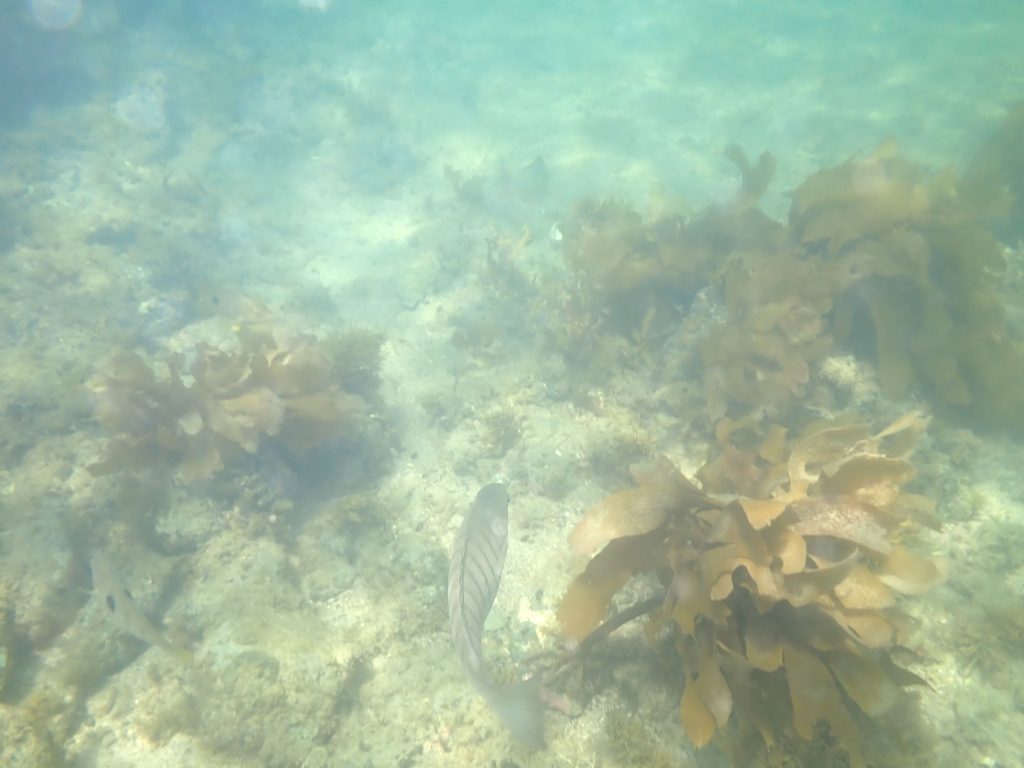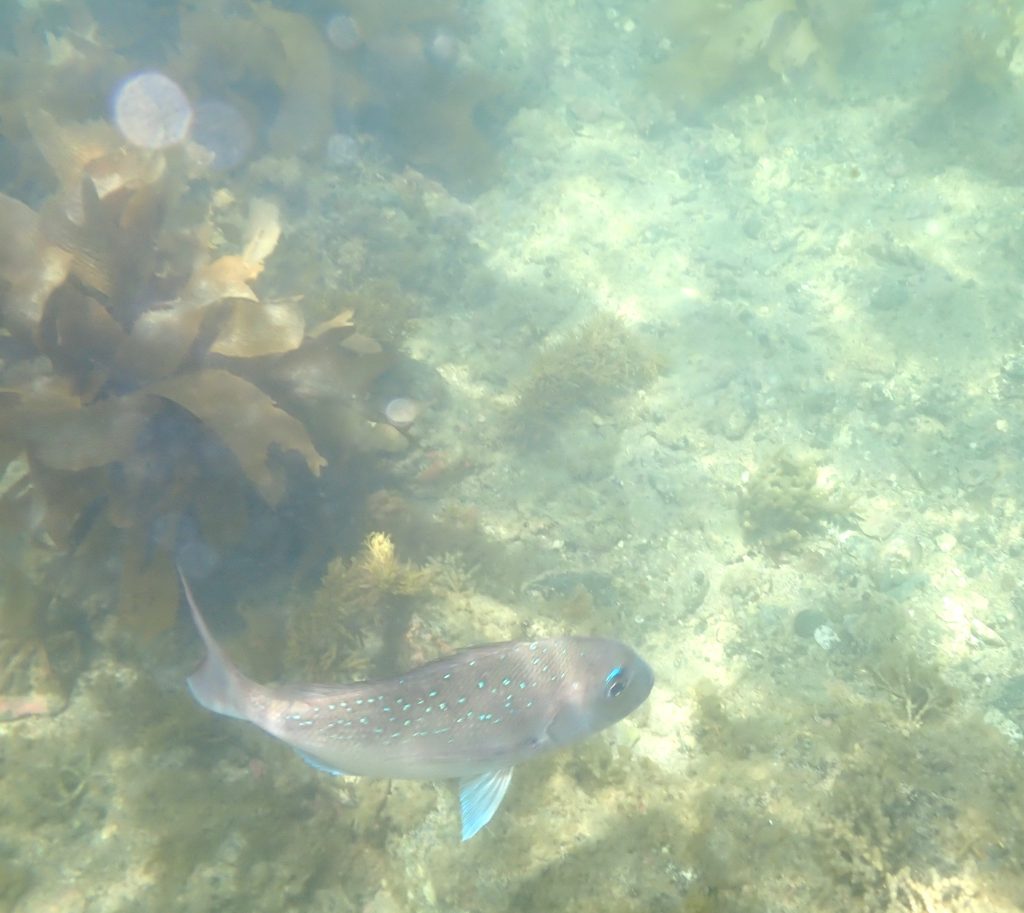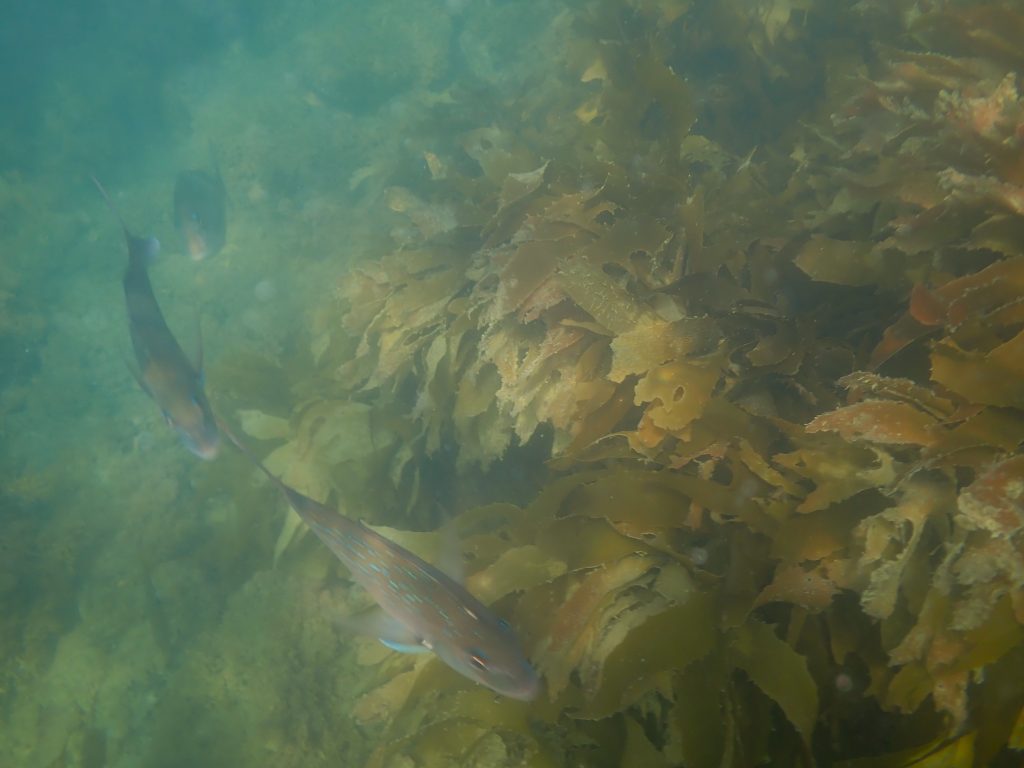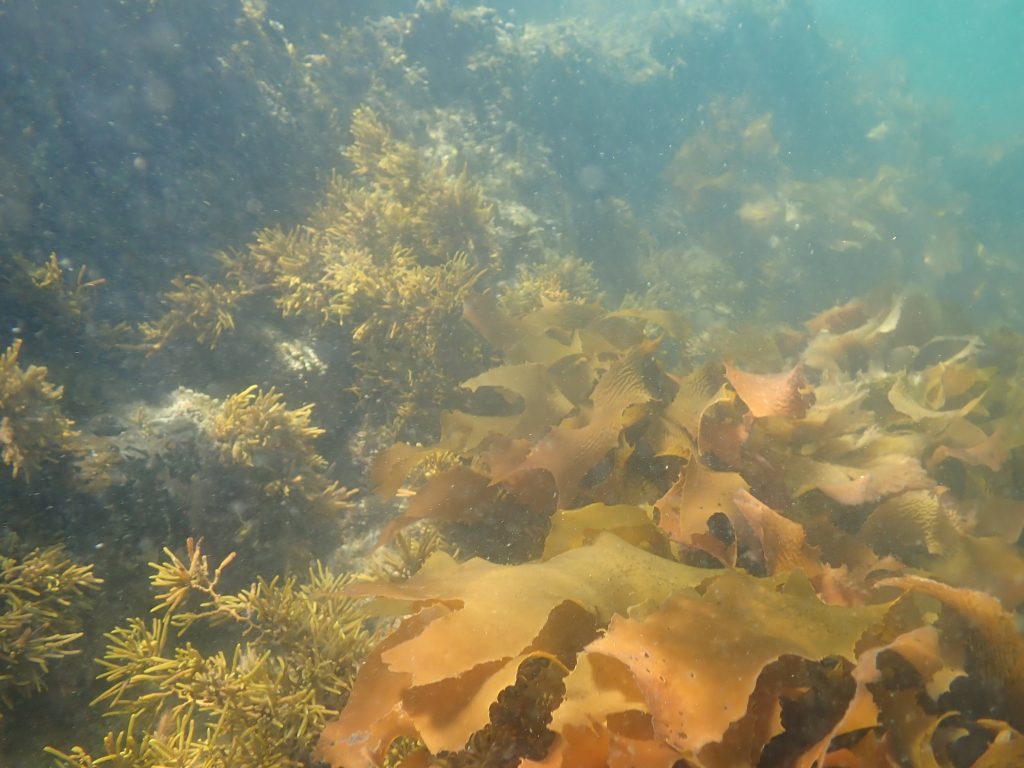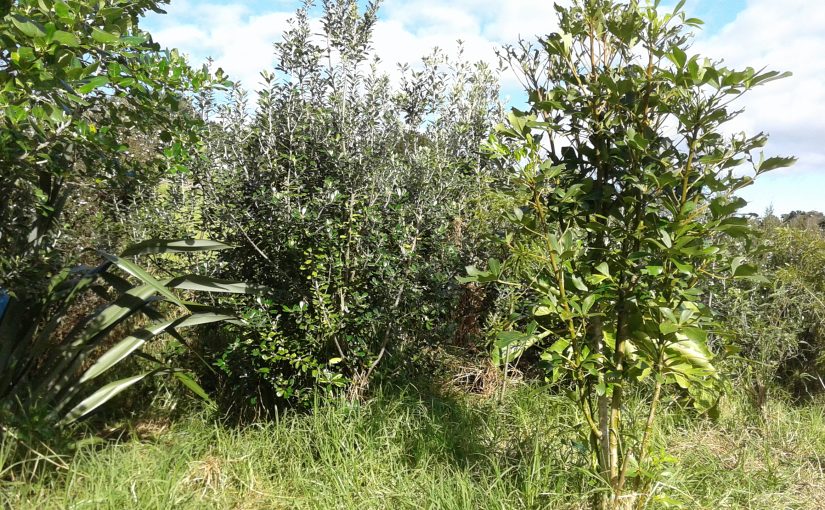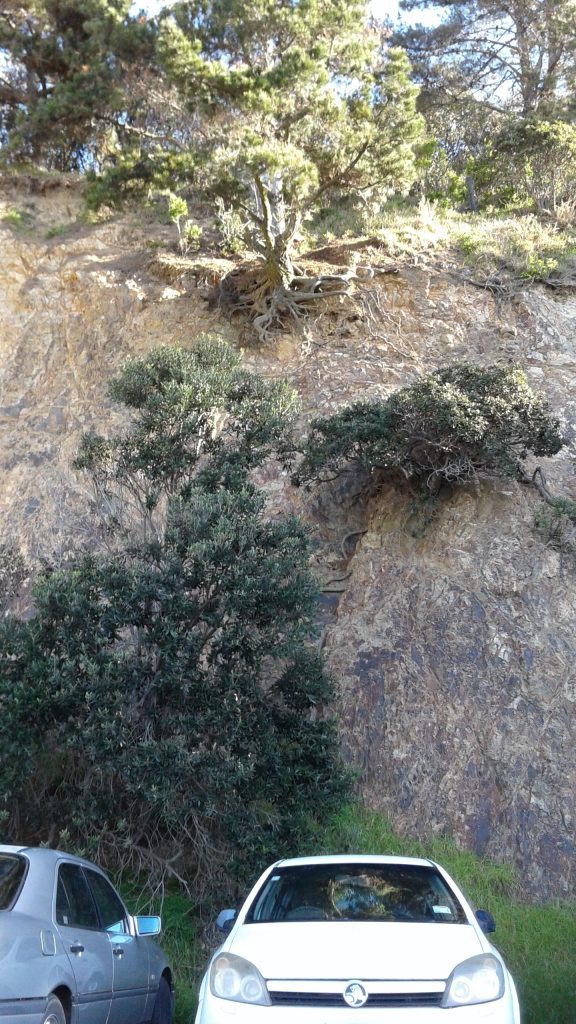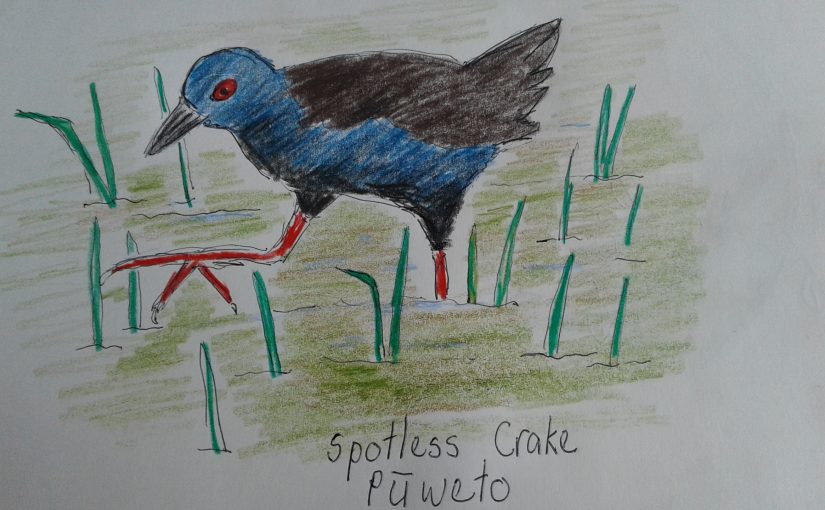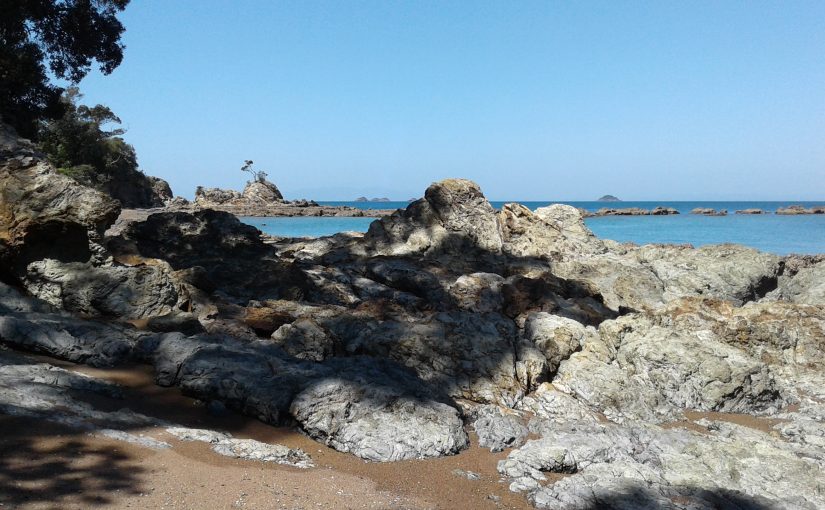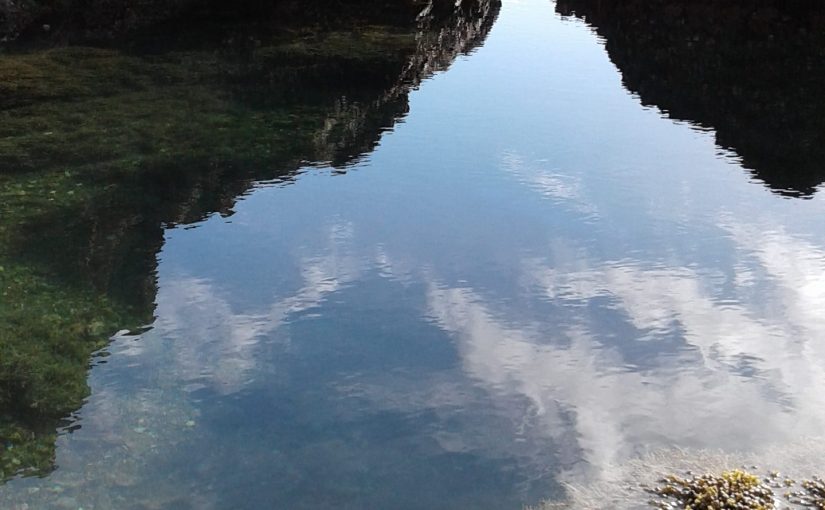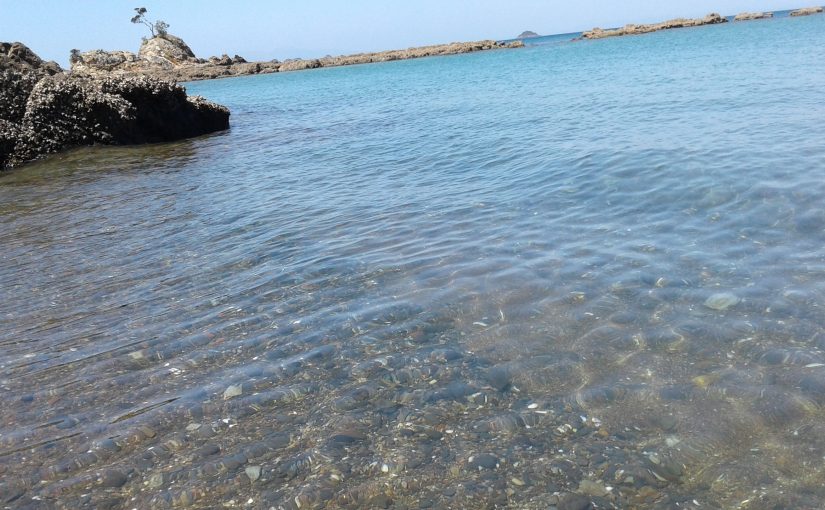In early May, Bert, Dylan, and I hosted a day visit to Rakino by the Waiheke Resources Trust.
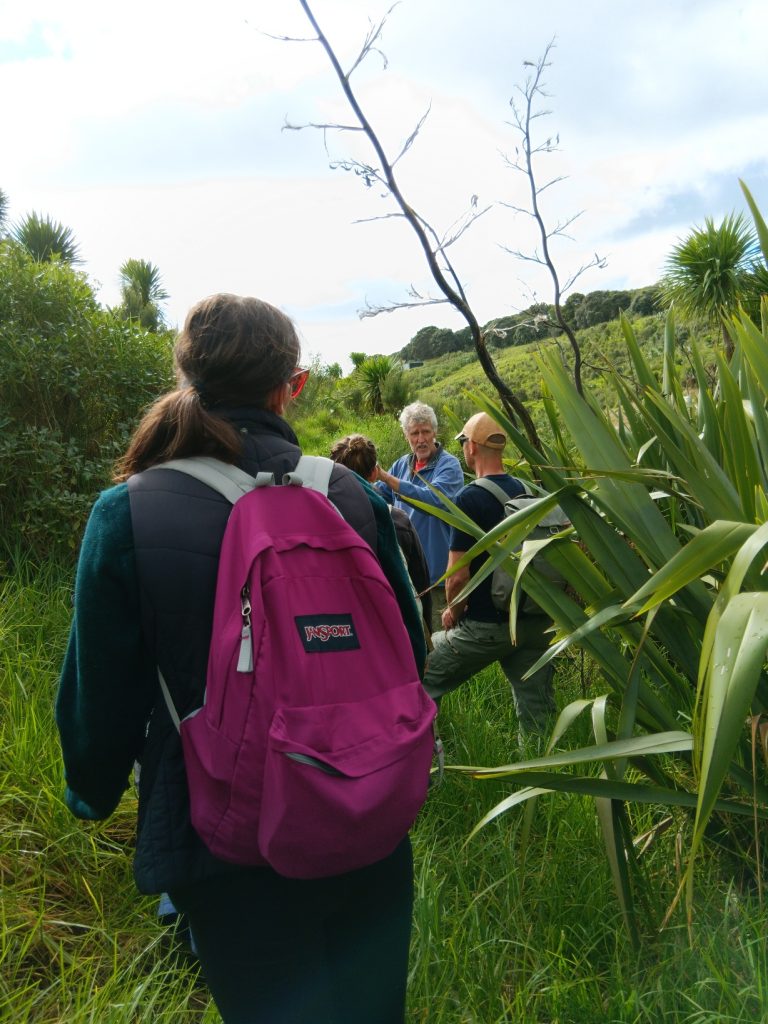
The WRT staff were visiting Kawau, Aotea, and Rakino as part of their mission to create community driven links between the four Gulf Islands. Check out the link to their website here : https://wrt.org.nz/
We had a busy day roaming through Bert’s and Kendal’s regenerating wetlands, visiting the nursery, and the intrepid Waihekeans Kristin, Montana, Nathalya, and Kym also had a comprehensive vehicular island tour courtesy of Dylan.
This was a precursor to a hui to be held by Waiheke Resources Trust on Waiheke in mid June, and attended by people from each of the four islands.
My association with WRT goes back a couple of years when they helpfully umbrella-ed a Local Board grant application, so I was enthusiastic to meet them in person, but also to connect with people from other islands. I was also interested to see a different side of Waiheke. I’d only visited the island in the past for events like Sculpture in the Gulf, and other people’s Big Birthday celebrations, so I was keen to have some encounters on Waiheke that were less injurious to my wallet with people that were similarly interested in ecology, environmental restoration, and waste reduction. Bert, Dylan, Simon, and I self-selected for the meet-up.
This necessitated a ferry trip and overnight stay, as the hui was to be held over two days.
Simon and I arrived early, and went for a quick wander around Oneroa. We spotted a likely looking chap in redbands and a swandri striding along the opposite side of the road. He had the reassuring aspect of a Rakino-ite, and turned out to be part of the delegation from Great Barrier as we discovered when we got back to the Sustainability Center which houses the WRT. Bert had arrived, but unfortunately rough weather meant that Dylan was unable to make the journey from Rakino to Waiheke in Kraken.
After lunch provided by the Kai Concious food rescue team followed by introductions we headed out on the first visit, to the Waiheke Community Resource Recovery Park, formerly known as the Waiheke Transfer Station, or ‘the dump’. WCRRP is part of the Zero Waste Collective, and it’s their task to divert as much ‘waste’ as possible from landfill. We had an animated discussion with Keith Enoka, the general manager of the waste collective, followed by a tour of the recovery station. I urge you to check out this link; it’s pretty inspirational, and an important consideration for all island dwellers as everything we bring to the island eventually ends up being removed at great expense. https://islandwastecollective.co.nz/
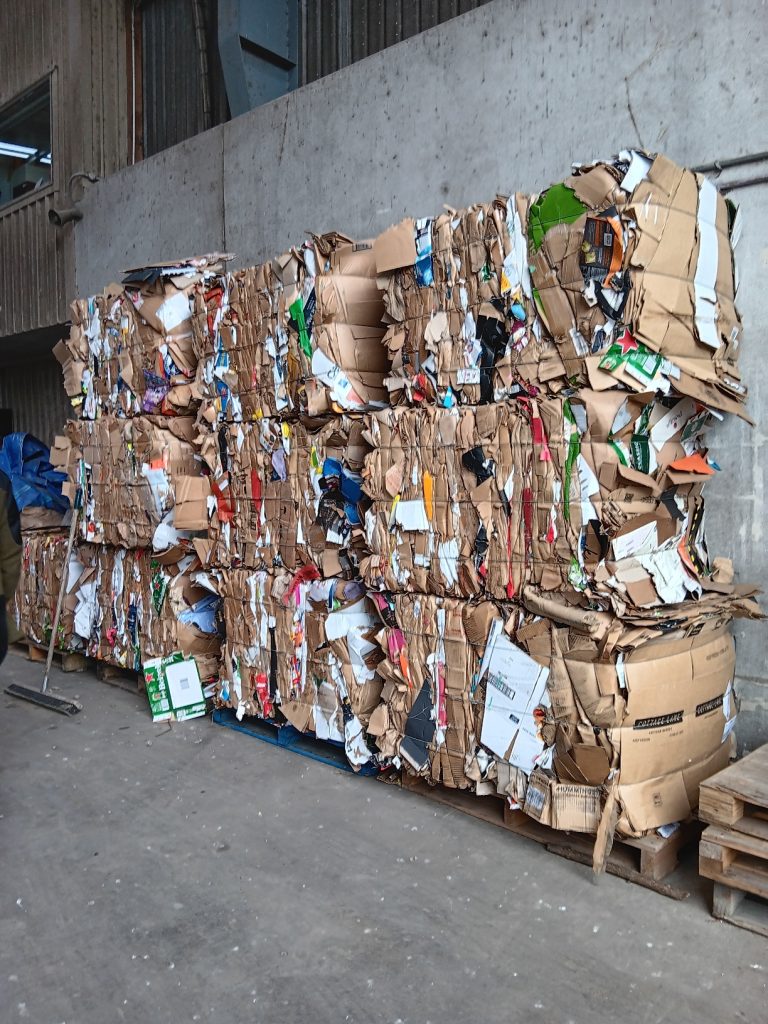
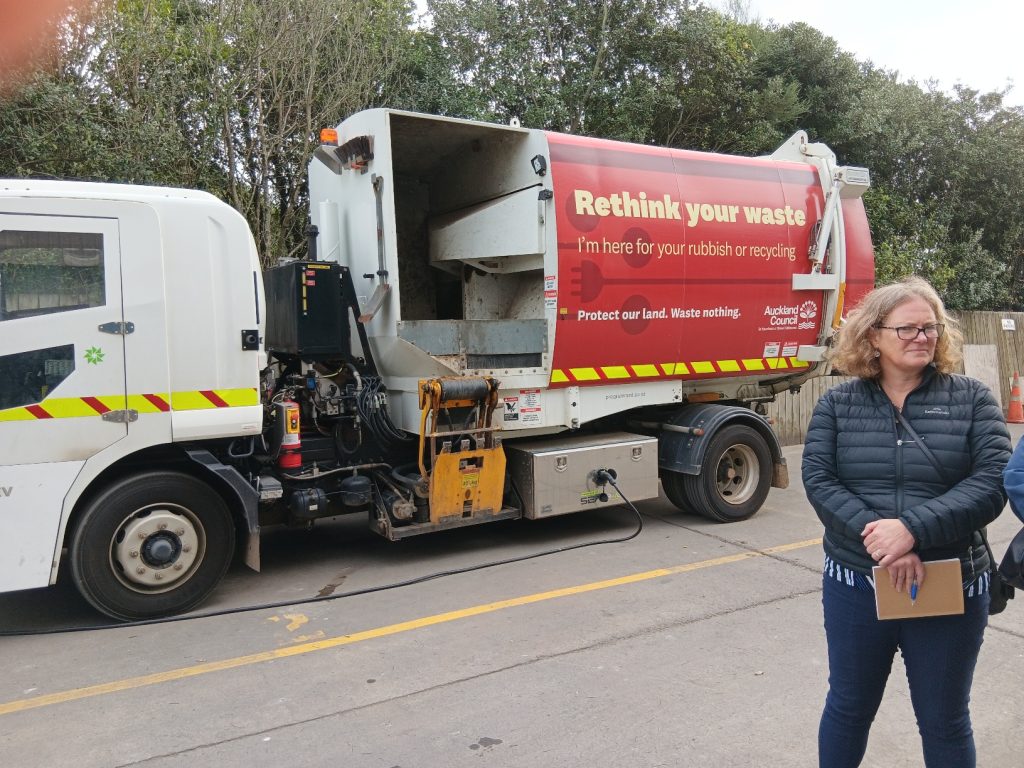
Our next visit was to the Compost Collective. Mike Fogarty heads up the composting team, and he gave us a comprehensive run through of the processes involved. The collective is supplied with food waste from a number of Waiheke restaurants which they compost with green waste. It was a post-prandial challenge to stare into the bin which had a top layer of fat/meat/bones, but the final product is a rich, dark, worm-laden compost which has a high nutrient value. Check out the link here : https://wrt.org.nz/composting/
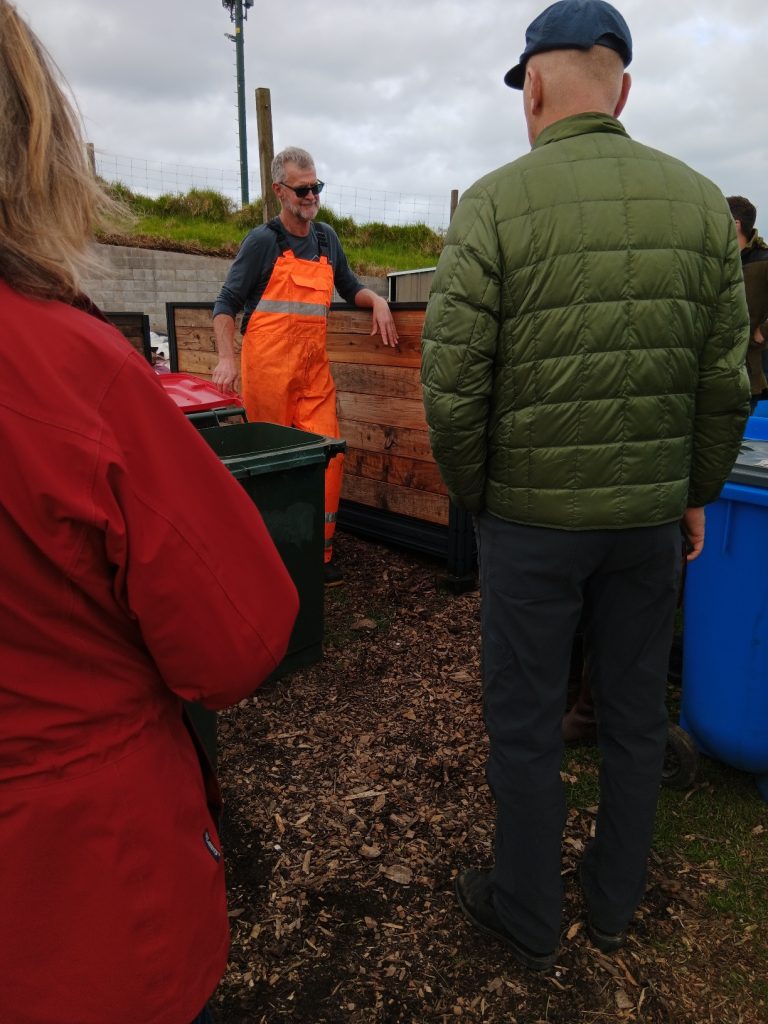
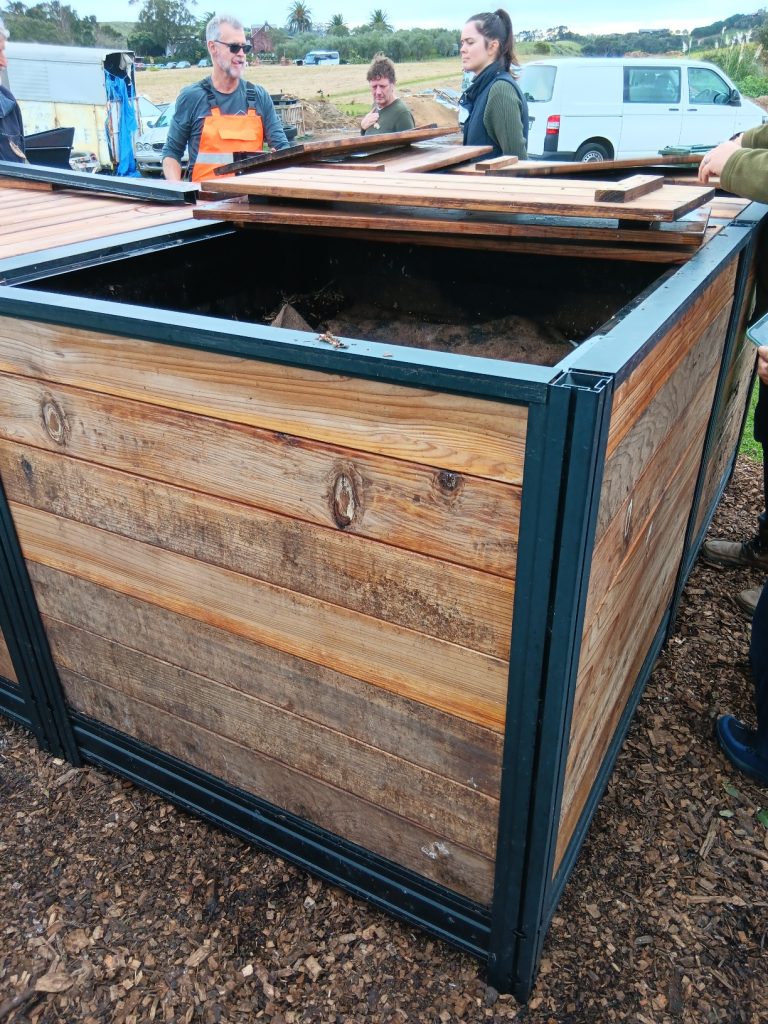
This was followed up by a visit to the plant nursery. The nursery supplies eco-sourced native plants to the public, but importantly, to the wetland planting restoration projects run by WRT, our next visit…
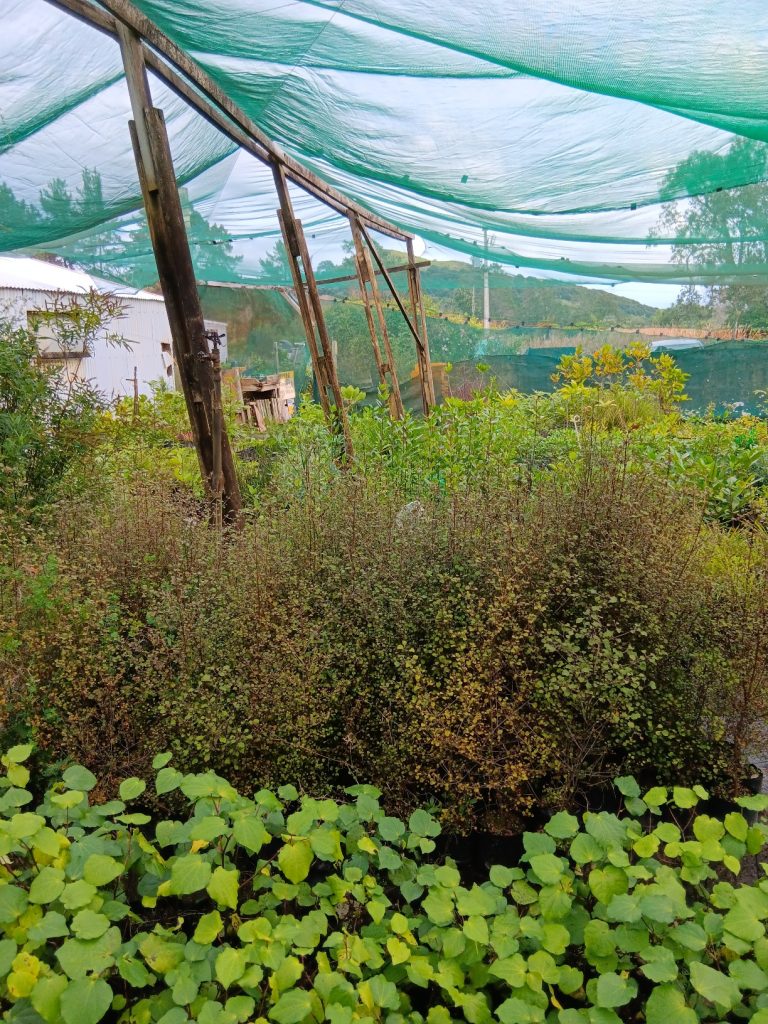
The Rangihoua wetland restoration project is seriously impressive, not in any small way because of the sheer volume of weeds that have had to be removed before any planting could get underway. Moth plant and woolly nightshade are a curse, but multiply that with invasive honeysuckle which is not permitted to be dealt with by spraying, and the task looks gargantuan. Kym Rawson the restoration manager gave us a tour of the area which is in varying stages of regeneration. It’s looking great, and I was also really impressed by the numbers of volunteers the project has, given that mainly people like planting trees, but weeding less so. Kym visited Rakino in May with the other WRT team, and had been impressed by the regenerative plantings on Rakino, as well as having useful insight to share about our wetlands.
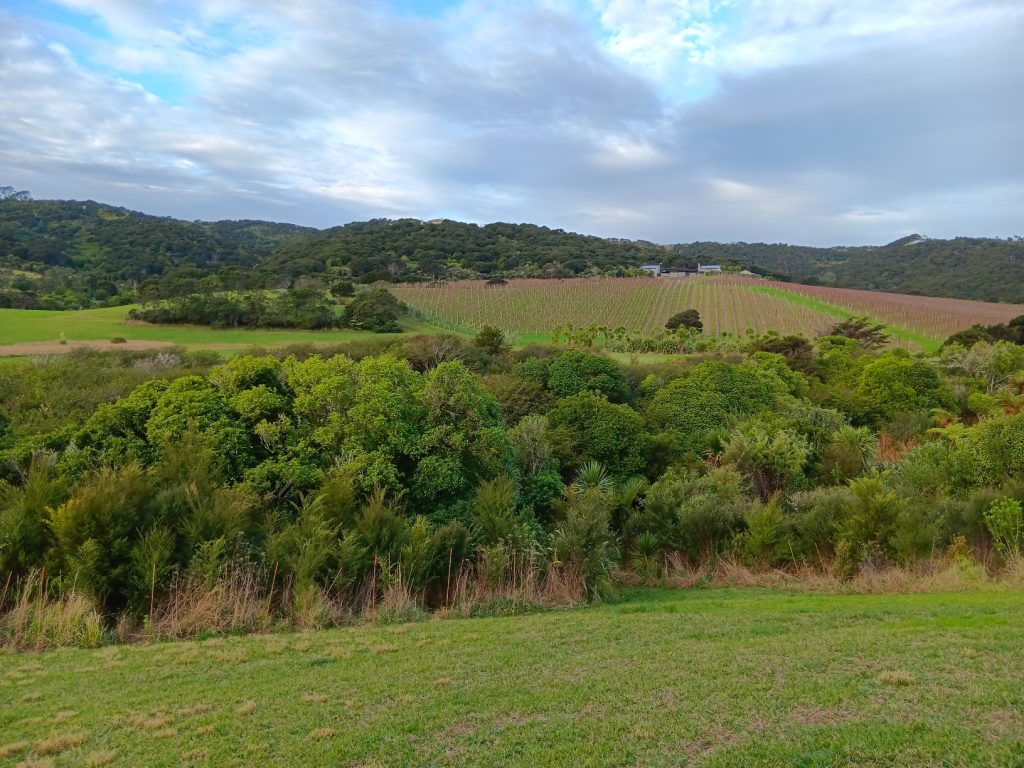
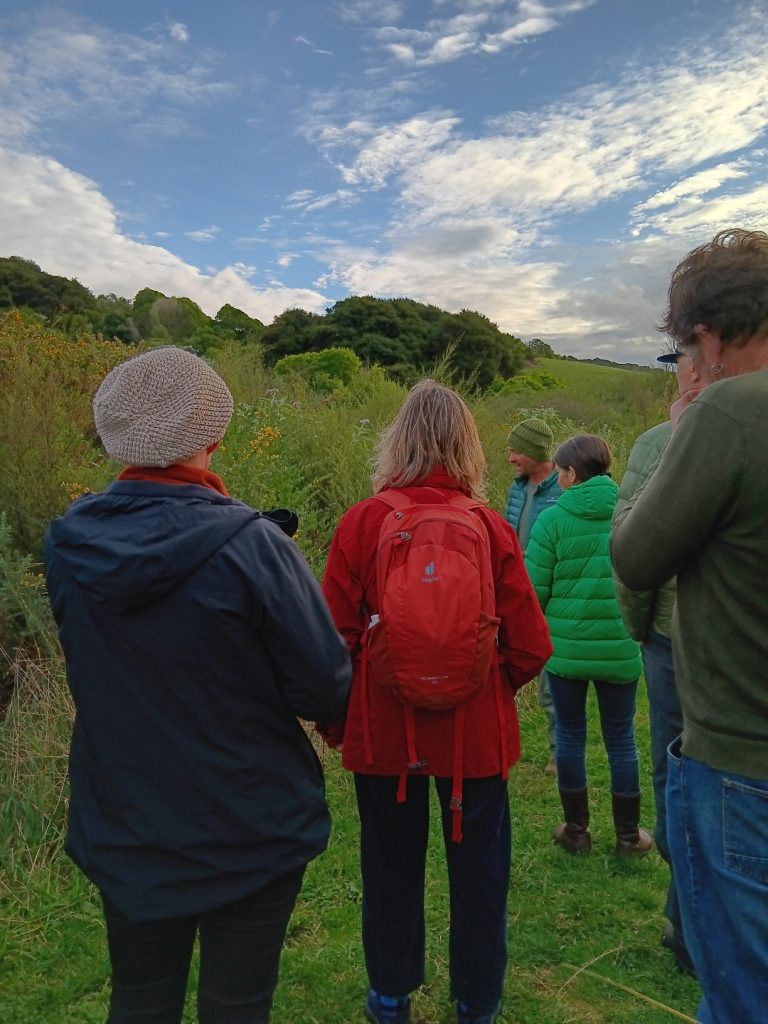
We returned to the Sustainability Center to relax, chat about the day with our new acquaintances, indulge in a couple of cold beverages, meet up with some more WRT staff, and feast on a potluck dinner, before heading off to our accommodation.
Day 2 of the hui focused on group workshops and a presentation by Livné Ore on the ins and outs of making successful funding applications. Livné was invaluable in guiding me when I applied for a modest sum for a snorkeling workshop, so I found her presentation helpful. Dylan had also found a window in the dodgy weather and managed to safely steer Kraken to Waiheke, so he could attend the final day.
Kristin and Montana will be collating all the outcomes of the hui, but broadly speaking there was agreement that it would be useful to share existing knowledge and resources, and that there was potential power in getting Auckland Council to view our collective islands as a distinct region while retaining our individual ‘cultures’. Thinking about some specific collective inter-island projects was also front of mind. We are also keen to re-convene in a year, as well as hold regular catch-ups and connect on social media. Everyone was keen to stress that none of us represent our individual islands, but as hui participants we have shared goals and interests. I’m looking forward to reading the collated discussion.
Many thanks to WRT for the huge effort in co-ordinating the hui, all the site visits, the great food provided by the kai conscious team, and many thanks to all the other participants who traveled to attend. I really enjoyed meeting people from other islands and seeing a completely different side of Waiheke to previous experiences.
